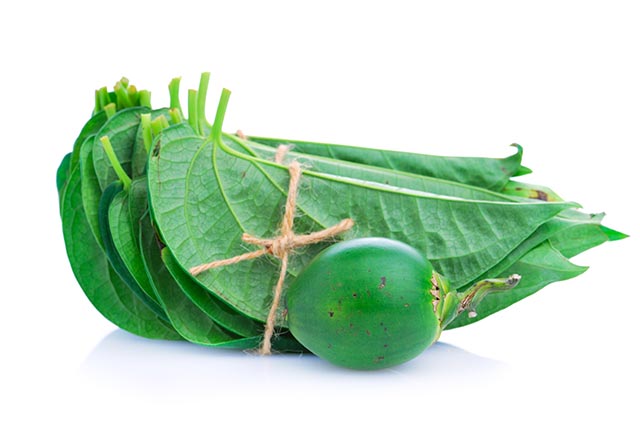
Diabetes mellitus is one of the most prevalent diseases around the world. One of its associated conditions is delayed wound healing. This degraded healing process is partly caused by high levels of reactive oxygen species in diabetics. These oxygen radicals are produced by oxidative stress, which, in turn, stems from a disruption of the balance between oxidant and antioxidant enzymes.
Diabetes reduces the activity of antioxidant enzymes like superoxide dismutase. Conversely, it increases the peroxidation of lipids, which produce reactive oxygen species.
It also raises the activity of the stress enzyme 11 beta HSD-1. This enzyme is reportedly linked to delayed wound healing. It can inhibit important parts of the healing process, such as the growth of new cells and the arrival of materials that can help patch up the wound. (Related: These ten foods balance your blood sugar and prevent diabetes.)
The healing and oxidant-fighting properties of betel leaves
The betel is a medicinal plant that is native to Asia. Its leaves are traditionally used to treat asthma, bad breath, cough, clogged throats, and ozoena. It is also used to stop bleeding and encourage the proper healing of wounds.
A 2003 study by the University of Calcutta attributed several therapeutic properties to betel leaves. The study identified anti-diabetic, antioxidant, and antimicrobial activities.
Later, a research team from the Universiti Kebangsaan Malaysia (UKM) reported that betel leaves could improve the healing of wounds on diabetic rats. The 2010 experiment found that the leaves could increase the total protein content and speed up the contraction of the wound.
A new effort by a different UKM team followed up on that earlier experiment. In addition to studying the effect of betel leaf extract as a topical agent to encourage better wound healing, they also evaluated the extracts' effects on oxidative stress markers.
They constructed an animal model of diabetes using rats. After inflicting wounds on the backs of the animals, they divided the rats into a control group, an untreated group, and two treatment groups. The conventional group was treated with silver nitrate cream treatment, while the extract group received topical ointment made from betel leaf extract.
Treatment lasted for seven days. On the third day, half of the animals in each group were sacrificed to analyze their wounds and various biochemical parameters, such as enzyme activity and oxidative stress levels. At the end of the treatment, the rest of the animals were similarly euthanized and evaluated.
Diabetic rats healed faster when treated with betel leaf extract
The UKM researchers reported that betel leaf extract demonstrated significant beneficial effects for rats with diabetes. By the end of the trial, it greatly increased the levels of hydroxyproline, which helps stabilize protein collagen that makes up the skin.
It also increased the levels of superoxide dismutase, an enzyme responsible for antioxidant activity. At the same time, it decreased the levels of malondialdehyde, a biomarker for oxidative stress produced by lipid peroxidation.
The extract also reduced the expression of 11 beta HSD-1. As earlier mentioned, this substance is responsible for slowing down the healing process.
Microscopic evaluation of the histological changes in the wound tissues confirmed the results of the chemical analysis. So did the transmission electron microscopic analysis of the changes at the ultrastructural level.
The researchers concluded that betel leaf extract possessed antioxidant effects that directly improved wound healing in animals with Type 2 diabetes mellitus.
For more stories about the therapeutic effects of betel leaves, visit Herbs.news.
Sources include:
NOPR.NISCAIR.RES.in [PDF]
Please contact us for more information.























